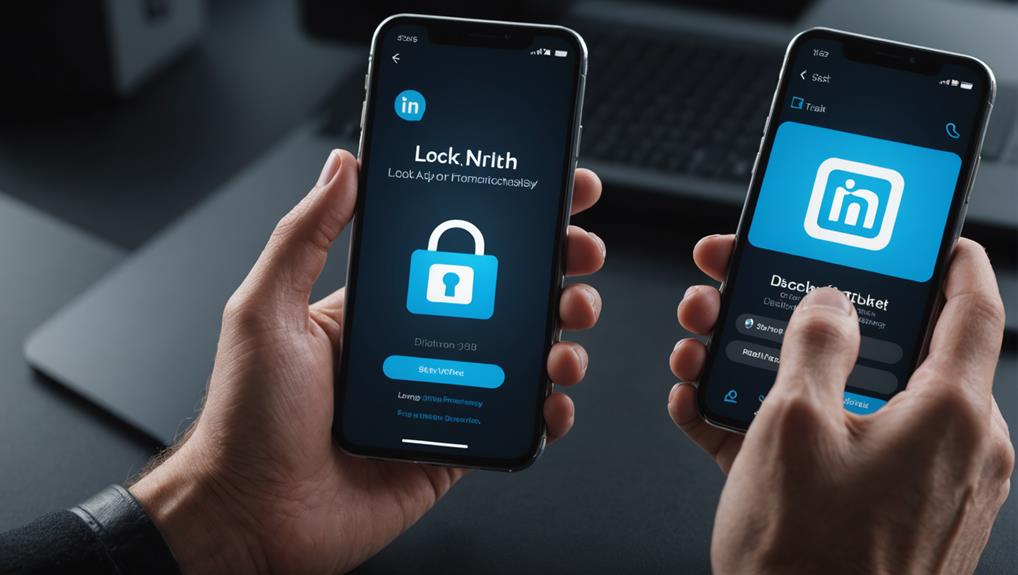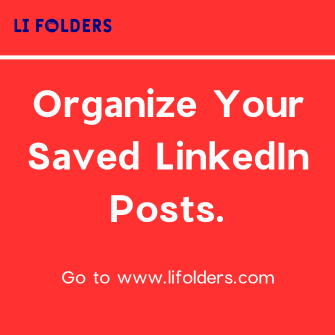
To restrict someone on LinkedIn without them noticing, start by clicking the 'Me' icon at the top of your LinkedIn homepage, then select 'Settings & Privacy'. Navigate to the 'Visibility' section where you can manage who sees your posts and updates. If you want to keep your interactions discreet, consider muting the individual, which prevents their updates from appearing in your feed without unfriending them. This way, you maintain professional boundaries without any awkwardness. As you adjust your settings, you'll find more nuanced ways to tailor your LinkedIn experience to better suit your professional needs.
Understanding LinkedIn Privacy

Understanding LinkedIn's privacy settings is crucial to managing how others see and interact with your profile. As a member of this professional community, you're part of a vast network where every interaction can influence your career trajectory. It's vital you feel secure and integrated.
You can tailor your visibility effectively by exploring the 'Settings & Privacy' section. Here, you'll find options to customize who can view your profile, updates, and even who can send you connection requests. It's all about creating a safe space where you can express yourself and connect with others without unnecessary exposure.
Additionally, consider adjusting your activity broadcasts. This feature controls who sees updates about your profile changes, like a new job or skill. It's useful when you're looking to make subtle changes without announcing them broadly.
Identifying Problematic Connections
You might encounter connections on LinkedIn who disrupt your professional environment or fail to respect boundaries. Spotting these problematic individuals is crucial for maintaining a healthy and productive network. You're not alone in this, as many professionals face similar challenges. Recognizing the signs early can help you manage your connections effectively.
First, watch for those who post inappropriate or unprofessional content. This might include offensive language, controversial opinions, or irrelevant material that doesn't suit a professional platform. You're part of a community that values professionalism and respect, and it's important to uphold these standards.
Additionally, be wary of connections who frequently send unsolicited messages or sales pitches that don't align with your interests or needs. It's about finding a balance between networking and maintaining your comfort zone. You have the right to choose who you interact with, ensuring your LinkedIn experience aligns with your professional goals and personal values.
Lastly, pay attention to how interactions with certain connections make you feel. If you're feeling uneasy or pressured, it might be time to consider what role they should play in your professional circle. Remember, your LinkedIn network should support your career, not hinder it.
Accessing Privacy Settings

Navigating to LinkedIn's privacy settings allows you to manage who views your profile and interactions effectively. It's where you can ensure that your professional journey is visible to the right people, helping you feel more connected and secure within your business community.
To get there, you'll need to sign into your LinkedIn account. Once you're in, look for the 'Me' icon at the top of your homepage. It's your gateway to personal settings and more. Click on it, and a dropdown menu will appear. From there, select 'Settings & Privacy'—this is where you take control.
In the 'Settings & Privacy' page, you'll find several tabs ranging from account preferences to how others see your LinkedIn activity. For now, focus on the 'Visibility' section. This part is crucial as it lets you tailor your online presence. You can adjust who sees your posts, who can follow you, and even manage the visibility of your connections.
Using the Block Feature
To restrict someone on LinkedIn, start by using the block feature found under the 'Visibility' settings. This tool is your go-to when you need to maintain your online space while staying connected to the broader community. By blocking a member, you ensure that your activities remain invisible to them without alerting them about this change. It's like creating a private nook in a bustling room, where you can interact freely without feeling someone's unwelcome gaze.
Once you navigate to the 'Visibility' settings, you'll find the option to 'Block or report.' Here, simply enter the person's name you wish to block. This action prevents them from viewing your profile, updates, or any shared content, fostering a sense of safety and control over your professional environment. They won't be notified, preserving harmony within your network and avoiding any potential awkwardness.
Muting Members Discreetly

While blocking removes someone entirely from your LinkedIn visibility, muting them allows you to discreetly stop seeing their updates without severing the connection. This feature is especially handy when you don't want to offend colleagues or acquaintances but need a break from their frequent or irrelevant posts.
Muting someone is quite simple. Just visit their profile, click on the three dots in the top section of their profile, and select “Mute.” This action ensures you remain connected and can still interact professionally when necessary, but their updates won't clutter your feed anymore. You're staying in the loop without the noise—keeping your network intact while tailoring your LinkedIn experience to suit your needs.
Adjusting Your Visibility
Adjusting your visibility on LinkedIn allows you to control how much of your professional activity others can see. This feature is essential for maintaining the right balance between being open and having privacy. When you tailor who sees your posts and interactions, you're not isolating yourself; instead, you're creating a space where you can share comfortably, knowing the right people are tuning in.
Consider your LinkedIn profile as your professional community space. Just like in any community, you want to feel safe and connected, not exposed or vulnerable. By customizing your visibility settings, you can protect your information while still engaging and building relationships with colleagues and industry peers who matter most to you.
You're also setting boundaries that respect your professional life. Perhaps you're not ready to share certain achievements or updates with everyone. That's perfectly okay. Managing your visibility helps you avoid any potential awkwardness with connections who might not need to see everything you're up to. It's about making strategic choices that enhance your professional journey, ensuring you're seen in the best light by those who play a pivotal role in your career growth.
Controlling Profile Updates

You can manage who sees your profile updates to ensure only relevant connections are informed of your professional changes. This feature helps you maintain a circle that's truly in tune with your career progression, fostering a closer, more supportive network.
When you post an update, whether it's a new job, a promotion, or other professional achievements, LinkedIn allows you to customize the visibility of each post. Before sharing, you'll find an option under your post labeled “Who can see this?” Here, you can select from various levels of visibility. If you want to keep things discreet and only share news with those who genuinely support your career journey, you might choose to share updates with a select group of connections.
This selective sharing reinforces the sense of a curated community where every update reaches the right eyes. It avoids the broader broadcast which might not always be necessary or desired. By controlling who sees your updates, you're not only protecting your privacy but also enhancing the quality of interactions and the support you receive. It's like creating a small community where everyone is up to speed and eager to see you succeed.
Managing Connection Requests
Managing connection requests effectively lets you further refine who can access your professional updates and interact within your network. It's essential you feel confident and comfortable with the people you let in. Here's how you can keep your professional circle both supportive and beneficial.
Firstly, don't hesitate to review each connection request thoroughly. Look at mutual connections, endorsements, and how their professional background aligns with yours. It's okay to be selective; after all, you're building a community where you want to feel supported and valued.
If you're unsure about a request, LinkedIn allows you to ignore or archive it temporarily. This gives you time to think it over without any rush. Remember, it's your right to decide who you connect with – no need to feel pressured.
Lastly, regularly updating your connection preferences can significantly streamline this process. Set limits that align with your career goals and personal comfort. You might prefer connecting only with those you've met in person or professionals in your industry. This ensures that your network remains relevant and aligned with your aspirations.
Reviewing Shared Content

Before accepting any content into your feed, it's crucial to scrutinize shared posts and updates to maintain a professional and relevant LinkedIn environment. You're part of a broader community here, and every piece of content you engage with reflects on your professional persona. It's not just about filtering out the noise; it's about curating a space that aligns with your values and professional goals.
When you come across a post or an update from a connection, take a moment to consider its relevance and value. Does it resonate with your industry's trends? Will engaging with this content enrich your network? Remember, every like, comment, or share you make is visible to your connections and can influence your professional relationships.
Also, be mindful of the authenticity of the information shared. In today's digital age, misinformation can spread quickly, and it's your responsibility to verify facts before passing them along. This vigilance helps create a trustworthy environment where all members can feel secure and valued.
Regular Privacy Check-ups
Regularly conducting privacy check-ups on LinkedIn ensures your settings align with your current career goals and privacy preferences. As you evolve professionally, it's crucial that your online presence resonates with the community you're aiming to be a part of. These check-ups are your chance to refine who sees what, ensuring you're presenting yourself to the right crowd.
Start by revisiting your profile visibility. Think about who you want peering into your professional life. Is your profile set to public, or limited to connections? Adjusting this can enhance your sense of security and belonging, as you're controlling the narrative and who gets to be a part of your professional circle.
Next, review your connection requests settings. Are you open to requests from anyone on LinkedIn, or only from people who know your email or have mutual connections? Tightening this can prevent unwanted interactions, making your network more exclusive and tailored to your needs.
Lastly, don't overlook the importance of managing your activity broadcasts. Decide if you want your network notified about your updates or if some accomplishments are better left unshared until the right moment. This control helps in maintaining a professional image that's curated just the way you want it.
Conclusion
You've got the tools now to maintain your LinkedIn privacy like a pro! Remember, discreetly mute bothersome connections, manage who sees your updates, and don't shy away from blocking when necessary. Keep your profile curated by regularly reviewing shared content and connection requests. With consistent privacy check-ups, you'll create a professional environment that truly reflects your boundaries and preferences. Stay empowered and in control of your online presence!






